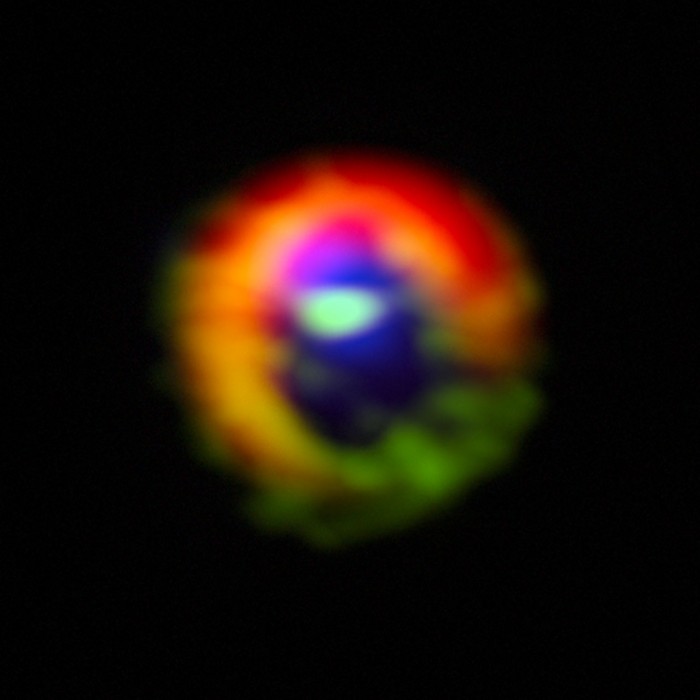← Zurück zu Zusehen bei der Planetenentstehung

eso1301b
Observations made with the Atacama Large Millimeter/submillimeter Array (ALMA) telescope of the disc of gas and cosmic dust around the young star HD 142527, showing vast streams of gas flowing across the gap in the disc. These are the first direct observations of these streams, which are expected to be created by giant planets guzzling gas as they grow, and which are a key stage in the birth of giant planets. The dust in the outer disc is shown in red. Dense gas in the streams flowing across the gap, as well as in the outer disc, is shown in green. Diffuse gas in the central gap is shown in blue. The gas filaments can be seen at the three o’clock and ten o’clock positions, flowing from the outer disc towards the centre. The dense gas observed is HCO+, and the diffuse gas is CO. The outer disk is roughly two light-days across. If this were our own Solar System, the Voyager 1 probe â the most distant manmade object from Earth â would be at approximately the inner edge of the outer disk.
